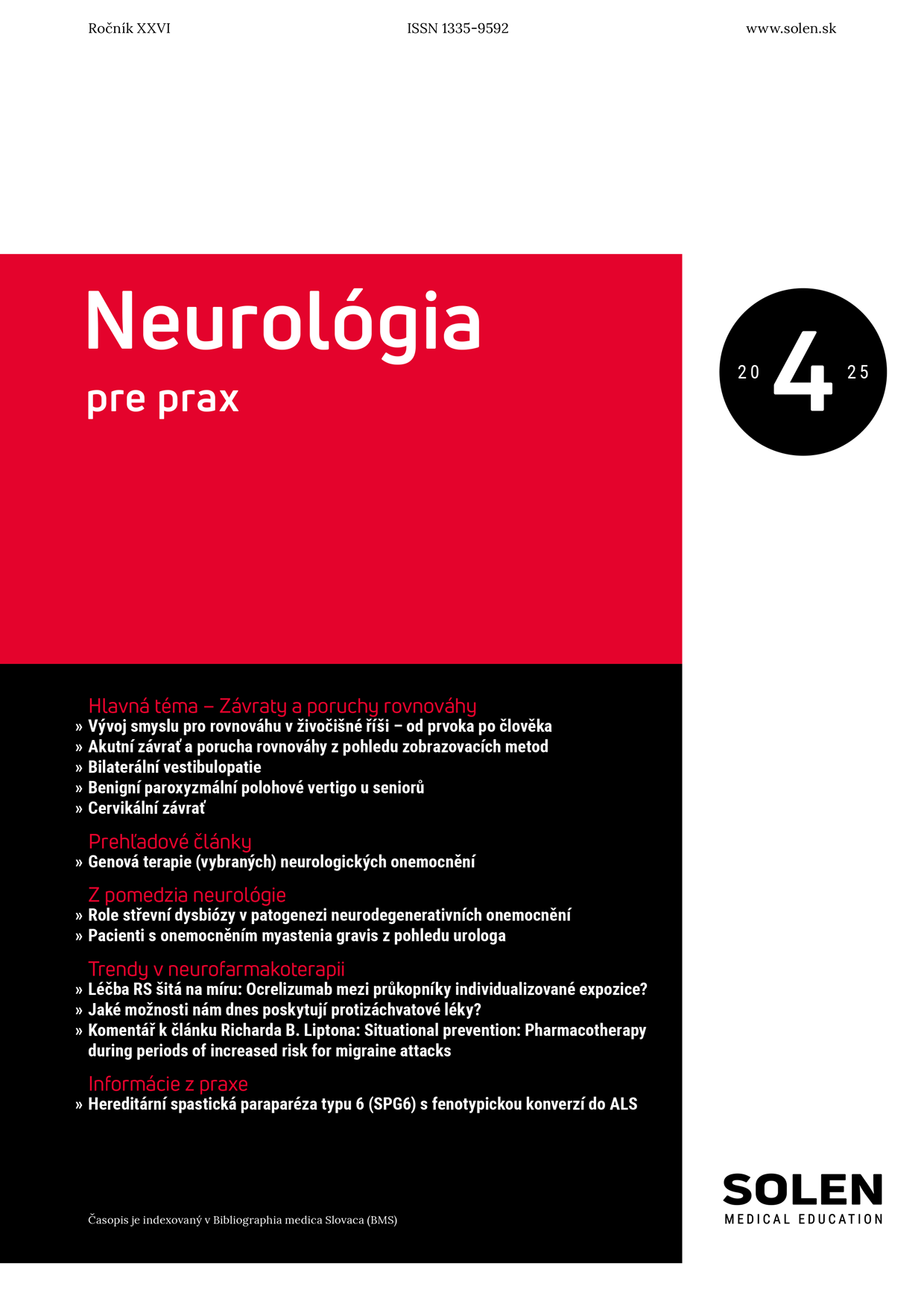Neurológia pre prax 6/2010
Late Lyme neuroborreliosis or post-Lyme borreliosis syndrome? A case report
The paper presents a case report of a patient with a history of healed Lyme borreliosis who, years later, developed symptoms of late (chronic) Lyme neuroborreliosis (LNB) which was confirmed and treated appropriately. According to the most recent EFNS guidelines on the diagnosis and management of European Lyme neuroborreliosis, late LNB is manifested by chronic mononeuropathy, radiculopathy or polyneuropathy in the peripheral nervous system and by cerebral vasculitis, chronic progressive encephalitis or encephalomyelitis with tetraspastic syndrome, spastic-ataxic gait disorder and disturbed micturition in the CNS. The diagnosis of late LNB is based on the history of tick attachment, the presence of erythema migrans (EM), the clinical presentation and cerebrospinal fluid (CSF) analysis; exceptionally, however, it may be established even in patients with no history of tick exposure or those who have not experienced EM. When the symptoms persist for more than six months following standard treatment and the CSF finding fails to show evidence of Borrelia infection, the condition is referred to as post-Lyme disease syndrome (PLDS). The paper also briefly mentions the differences between late LNB and PLDS.
Keywords: chronic mononeuropathy, radiculopathy, polyneuropathy, chronic encephalomyelitis, post-Lyme disease syndrome.

















